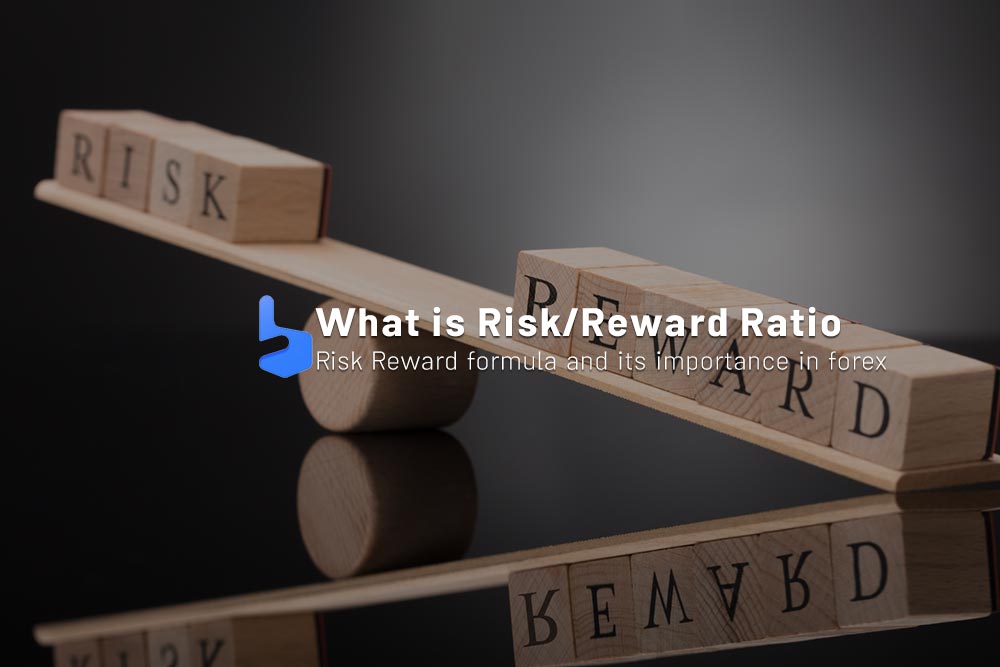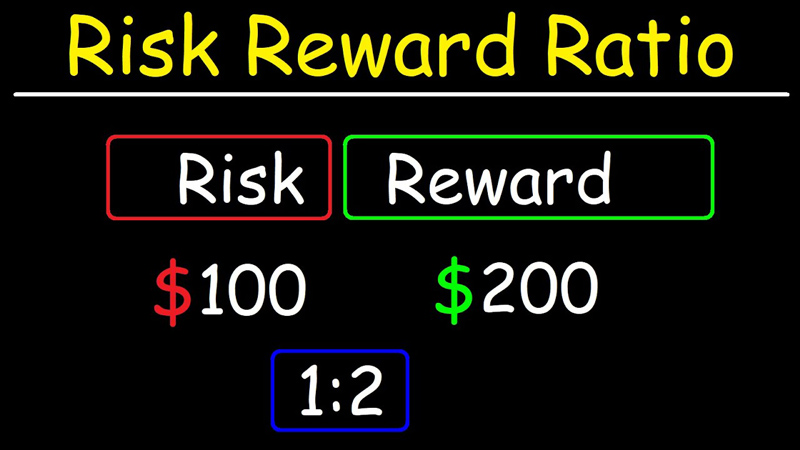What you are about to read:
The currency market, commonly referred to as Forex, is the world’s largest financial market with an average daily trading volume exceeding 6 trillion dollars. Forex trading involves buying and selling different currencies with the aim of profiting from the differences in their exchange rates. However, like any investment, Forex trading is not without risks, and traders must understand and manage the existing risks. One of the key concepts in Forex trading is the risk/reward ratio, which we will discuss in this article from Brokerland.
What is the Risk/Reward Ratio?
The risk-reward ratio is a concept commonly used in Forex trading to assess the risks and potential rewards of a trade. Simply put, this ratio represents the amount of money a trader is willing to risk in a trade compared to the potential profit they hope to gain.
For example, if a trader is willing to risk $100 in a trade and expects to make a profit of $200, his risk-reward ratio would be 1:2. This means that the trader is willing to risk one unit of currency to potentially gain two units.
The Importance of the Risk-Reward Ratio
The risk/reward ratio is a fundamental concept in Forex trading because it allows traders to evaluate the risks and potential rewards of a trade before entering into it. By understanding this ratio, traders can determine whether a trade is worth pursuing based on the potential profit they hope to achieve and the amount of money they are willing to risk.
For instance, if a trader is willing to risk $100 in a trade but expects to make only $50 in profit, their risk/reward ratio would be 2:1. In this case, the potential reward is less than the potential risk, and the trade may not be worthwhile.
On the other hand, if a trader wants to risk $100 in a trade and hopes to make $300 in profit, their risk-reward ratio would be 1:3. In this case, the potential reward is greater than the potential risk, and the trade may be considered valuable.
Understanding the risk-to-reward ratio allows traders to determine the size of their positions. Position size, or trade volume, is a process used to determine how much of a trader’s account should be risked in a single trade based on the tolerance for risk and potential rewards of the trade.
For example, if a trader has a $10,000 trading account and is willing to risk 2% of their account in a trade, they should not risk more than $200 in the trade. If the potential profit of the trade is $400, their risk/reward ratio would be 1:2, and the trade may be worthwhile.
How to Calculate the Risk Reward Ratio
Calculating the risk/reward ratio is relatively simple. To calculate it, traders need to determine the amount of money they want to risk in a trade and the potential profit they hope to achieve. The formula for calculating this ratio is as follows:
For example, if a trader is willing to risk $100 in a trade and hopes to make a profit of $300, their risk/reward ratio would be 1:3. This ratio can also be expressed as a percentage, where the potential reward is 300%, and the potential risk is 100%.
Traders should always aim for a minimum risk-reward ratio of 1:2. However, this ratio should be considered along with other factors such as the trader’s trading strategy, market conditions, and risk tolerance.
It’s essential to note that the risk reward ratio is not the only factor traders should consider when entering a trade. Traders should also take into account other factors such as market conditions, technical analysis, and fundamental analysis.
Risk Management in Forex Trading
Risk management in forex trading is crucial, and traders must have a clear understanding of the risks involved in their trades. Here are some points regarding how to manage risk in forex trading:
Use Stop-Loss Orders: A stop-loss forex order is a tool that automatically closes a trade when the price reaches a certain level. Traders can use stop-loss orders to limit their potential losses in a trade.
Utilize Risk Management Tools: Many forex trading platforms, such as TradingView, offer risk management tools that can help traders manage their risks more effectively.
Diversify Your Portfolio: Diversifying a trading strategy is key in forex trading. Traders can spread their risk across different currency pairs, reducing the impact of potential losses.
Manage Leverage: Leverage is a double-edged sword in forex trading. While it can increase profits, it can also amplify losses. Traders should use leverage cautiously and manage their positions carefully.
Have a Trading Plan: Having a well-defined trading plan is essential in forex trading. Traders should have clear rules for entry and exit, risk management strategies, and trading strategies.
Stay Informed about News and Events: Being aware of market conditions and forex news is crucial in forex trading. Traders should stay updated on economic indicators, central bank announcements, and significant forex news that can impact the currency market.
Factors Affecting the Risk/Reward Ratio
Several factors can influence the risk reward ratio in forex trading, including:
- Market Volatility: High levels of market volatility can increase the potential reward of a trade but may also elevate potential risks. Traders need to be aware of market volatility and adjust their risk management strategies accordingly.
- Trading Strategy: The risk-reward ratio can vary depending on the trader’s trading strategy. Some trading strategies may offer higher potential rewards but come with higher potential risks, while others may offer lower rewards and lower risks.
- Time Frame: The time frame of a trade can also impact the risk/reward ratio. Shorter time frames may have higher potential rewards but also higher potential risks, whereas longer time frames may offer lower potential rewards and risks.
- Trade Volume: The volume of a trade can affect the risk-to-reward ratio. Higher trade volumes can increase both potential rewards and potential risks.
- Risk Tolerance: The trader’s risk tolerance can also influence this ratio. Traders with higher risk tolerance may be inclined to engage in trades with higher potential risks and rewards, while those with lower risk tolerance may prefer trades with lower risks and rewards.
Advantages of Using a Favorable Risk Reward Ratio in Trading
Utilizing an appropriate risk reward ratio in forex trades can offer several advantages, including:
Risk Reduction: By employing a suitable risk-reward ratio, traders can limit potential losses, reduce overall risk, and help prevent margin calls.
Increased Profitability: Maintaining a desirable ratio can enhance the profitability of trades. Traders can set higher potential rewards while still managing to limit potential losses.
Improved Risk Management: A favorable risk/reward ratio enables traders to enhance their overall risk management strategies. They can identify trades with desirable risk-to-reward ratios and manage their trades more effectively.
Clearer Decision-Making: Using a good ratio can assist traders in making more objective decisions. Focusing on potential risks and rewards helps traders avoid emotionally-driven trades based on market hype.
Conclusion
In conclusion, the risk/reward ratio is a fundamental concept as you decide to learn forex trading that can help traders manage their risks more effectively. By calculating and aiming for a risk-reward ratio of at least 1:2, traders can increase their chances of success in the forex market.
However, traders should consider other factors such as market conditions, trading strategies, and risk tolerance when entering a trade. With a comprehensive approach to forex trading and effective risk management, traders can improve their profitability and achieve long-term success in the forex market.












